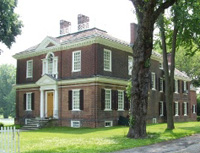Map Controls
- Reset the map
- View Trailheads
- View Trail Towns
- View Places to Visit
Map Legend
- Trailheads
- Trail Towns
- Places to Visit
- Schuylkill River Trail (SRT)
- On-Road SRT
- Proposed SRT
- Proposed On-Road SRT
Plan Your Trip
USING THE MAP
The Schuylkill River Greenways map is divided by Trailheads, Trail Towns and Places to Visit.
- Click on the category of your choice and a dropdown list of content will appear. Click any of the options within the dropdown menu and additional content will appear. Or, click on the “Places to Visit” category to see all available activities along the trail.
- Another way to navigate the map is to rollover the icons on the map. The preview will show you what kind of item it is. Click on it to reveal more information.
- Use the quick links at the top left to filter through Trailheads, Towns, and Places to Visit.
Trailheads/Parking
Trail Towns
Places to Visit
Woodford

Woodford is a fine example of late Georgian architecture and one of the earliest surviving in the Philadelphia area. It contains all the elements associated with this style such as brick construction using the Flemish bond pattern, a Palladian window, pedimented front, Chippendale roof balustrade and symmetrical facade.
The first owner, Judge William Coleman, Justice of the Provincial Pennsylvania Supreme Court, was a Quaker and Franklin’s confidant. After his death in 1769, the house became a Tory residence – first with Alexander Barclay, King George III’s Controller of Customs at the Port of Philadelphia, and later as the home of Rebecca Franks, beautiful daughter of a highly placed father, David Franks. Franks added the second floor, with an unusual stair hall, and a Palladian window above the nine-foot high entrance doors. Franks was exiled in 1780 because of his Tory activities, and Woodford reverted to Quaker ownership. The Wharton family held it for several generations until it became part of Fairmount Park in 1868.
Woodford is best known, however, for its eye-popping decorative arts accumulated primarily by Miss Naomi Wood who made it her life’s work to collect antiques. The guest at once experiences the feeling of affluent Colonial life, as though Benjamin Franklin, who had been a frequent visitor, just stepped from the finely carved and paneled parlor.
- Admission Fee
- National Historic Landmark